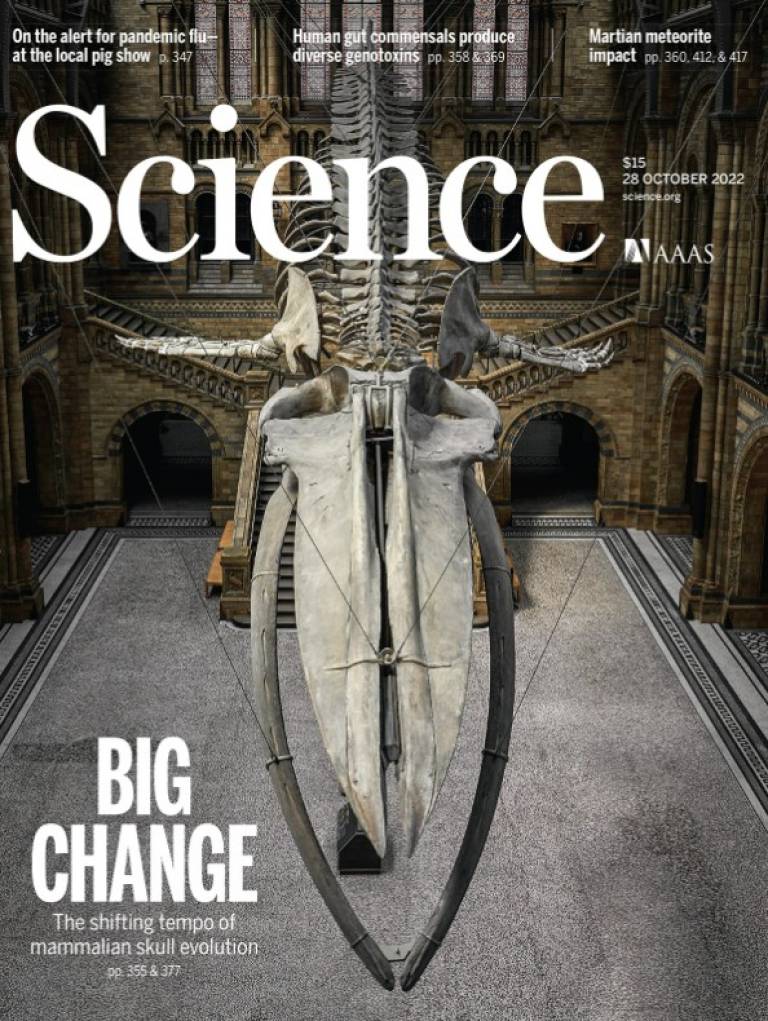Science article from Felice lab explores shifting evolutionary tempo of skull formation
1 November 2022
The paper looks across a large dataset of extinct and extant mammalian skulls and finds that the rate of evolutionary change peaked around the time of the Cretaceous-Paleogene boundary and has generally tapered off since then.

Research led by Angela Goswami (UCL Genetics, Evolution and Environment) and Ryan Felice of the Centre of Integrative Anatomy (CIA) and UCL Research Department of Cell and Developmental Biology sheds new light on the pace of evolutionary change in skull formation.
Mammals have the greatest degree of morphological variation among vertebrate classes, ranging from giant whales to the tiny bumblebee bat. How they evolved this level of variation has been a persistent question, with much debate being centered around the timing and tempo of evolutionary change. Goswami et al. looked across a large dataset of extinct and extant mammalian skulls and found that the rate of evolutionary change peaked around the time of the Cretaceous-Paleogene boundary and has generally tapered off since then. Certain lifestyles, such as aquatic habitats or herbivory, led to faster change, whereas in some species such as rodents, morphological change appeared to be decoupled from taxonomic diversification.
Research article: https://www.science.org/doi/10.1126/science.abm7525
 Close
Close

